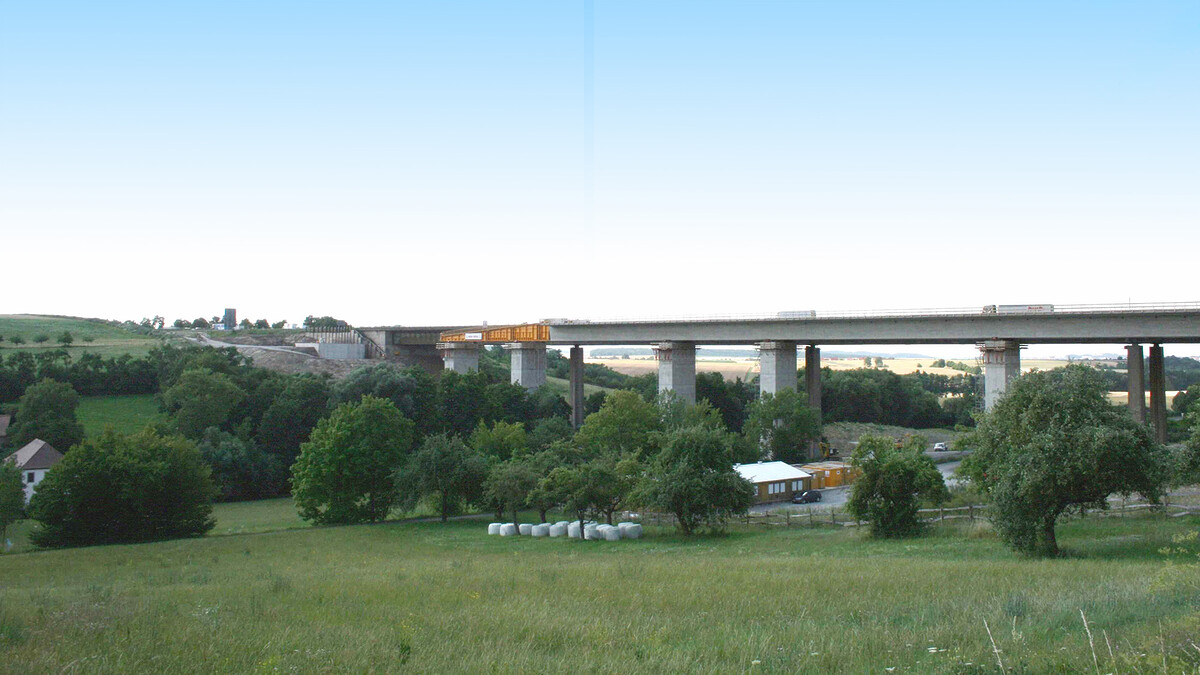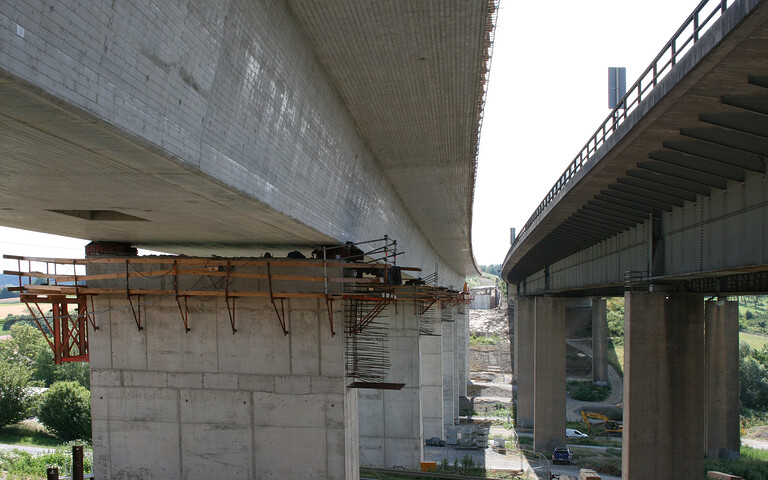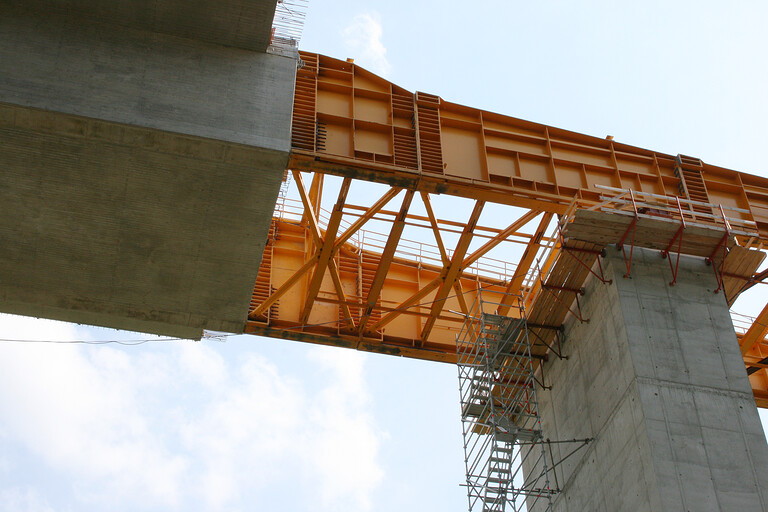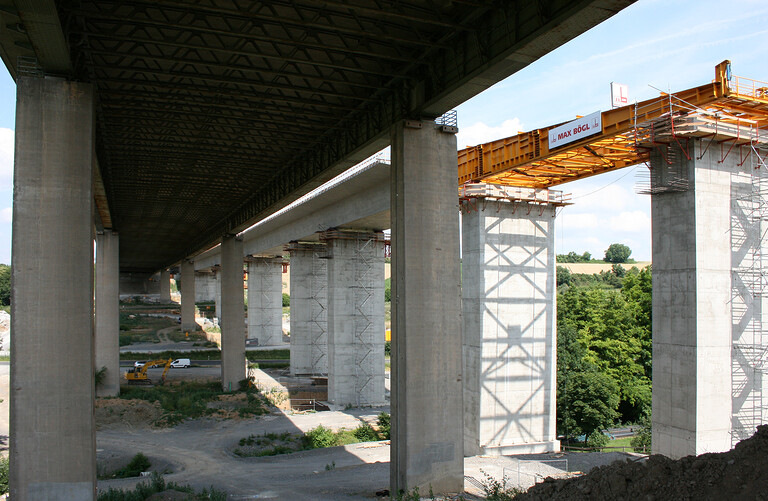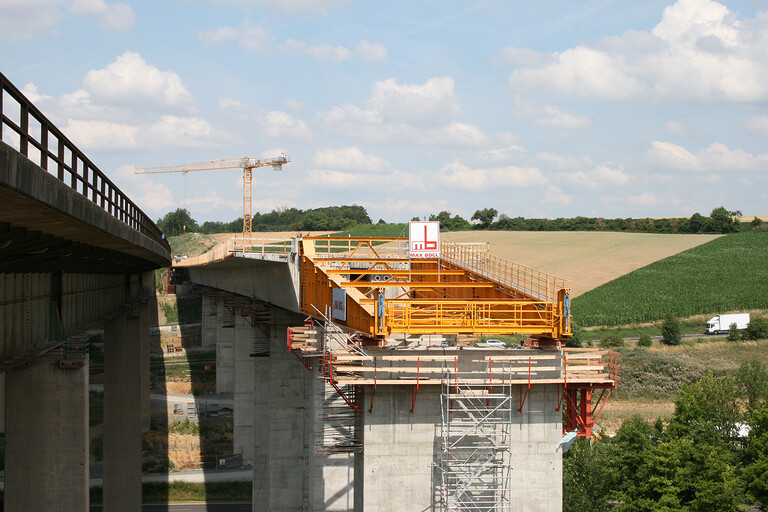Replacement of the bridge over the Kürnach valley [Talbrücke Kürnach]
Project duration from 2015 to 2021
Client
The Autobahn GmbH of the German central government, North Bavaria subsidiary
Location
Kürnach, Bavaria, DE
The bridge over the Kürnach valley, as part of the BAB A7 project, is located between the Würzburg-Estenfeld motorway exit and the Biebelried intersection. This structure, measuring 353 metres in length, was constructed back in 1965. When examined in 2013, it was found to be affected by substantial structural damage and deficiencies in the boundary conditions for load capacity and suitability for use, in longitudinal as well as in transverse directions.
This seriously impaired the residual service life of the bridge which prompted the planning of a new replacement at the same location. Taking due account of the need for further expansion of the A7 in the affected section of motorway, the replacement new-build was planned to have a six-lane cross-section with hard shoulders on either side. Due to the proximity of the municipality of Kürnach, and in the context of a later expansion of the A7 motorway, additional noise abatement measures are required, with structural implications.
The future construction work will involve tackling the lanes in each direction of travel in separate phases. The construction comprises a continuous beam with a pre-stressed concrete box girder cross section suitable for pedestrian access, employing a composite design. This structure has a constant height of 4.00 m. The substructures comprise solid thrust bearings and pillars that support the structural loads on deep piles driven into the substrate. The superstructure components are being constructed without any interruption to road traffic, through the use of an incremental launching method.
The implementation sequence initially envisages the manufacture of auxiliary substructures and a laterally offset superstructure. After complete rerouting of traffic onto this laterally offset section, the existing structure can be demolished completely. In the next step, all substructures for the new-build and the superstructure on the second structural section can be finalised and traffic will then be routed onto this. Finally, the laterally offset superstructure of the first construction phase will be pushed transversely and all of the auxiliary substructures and offset lanes will be restored.
OBERMEYER was awarded the planning services relating construction planning for the civil engineering works and with structural planning. These services also include the planning of demolition work and the planning of longitudinal and lateral offset concepts as well as shoring to protect the construction excavations.
Copyright
OBERMEYER
